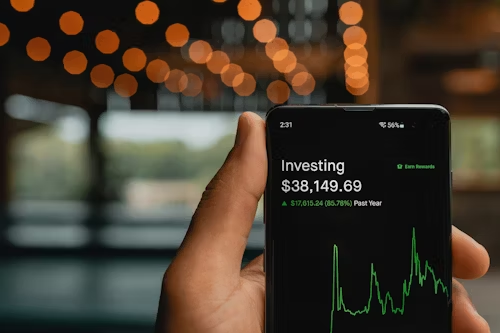Index trading is an art where timing is the most important factor. The movement of each index depends on the active hours of the market. When liquidity is tall, cost activity can be anticipated, and dealers discover superior sections and exits. Choosing the best time not as it were controls hazard but moreover increments benefit potential. Shrewd dealers adjust their techniques with particular time outlines to make instability work in their favor.

The part of the worldwide exchanging session
Forex and list markets are open 24 hours a day, but each session has its claim part. The Asian session is calm, whereas the European and US sessions are exceptionally dynamic. Lists such as the S&P 500, DAX, and FTSE move more amid these hours. Exchanging volume crests when the London and Unused York sessions cover. This period is perfect for any dynamic dealer, as the advertisement gives clear direction.
Major files and their dynamic times
Each list has its own showcase timing. For example, the S&P 500 and NASDAQ are dynamic amid Modern York Stock Trade hours. The DAX and FTSE see more development amid European exchange hours. The Nikkei and Hang Seng exchange amid the Asian session. It is vital for each dealer to get it these timings so that they can arrange their passages and exits.
S&P 500 Exchanging Opportunities
Eastern Time. Instability is tall in the early hours as news and profit reports are discharged. The advertisement moderates down a bit in the evening but recaptures its vitality in the closing hours. The opening and closing times are perfect for dealers who lock in short-term scalping.

European file crest times
European markets such as the FTSE DAX and CAC 40 are open from 8:00 am to 4:30 pm UK time. These lists are most dynamic amid the London and Frankfurt showcase cover. European records moreover respond when the US markets open. This cross-session minute offers dealers a twofold chance. Short-term exchanging is most beneficial amid periods of high volatility.
Asian advertise activity
Amid this period, financial information from Japan and Hong Kong are discharged, which specifically influences showcase opinion. If a dealer needs to take a long-term position, it is accommodating to recognize the drift amid the Asian session.
London Modern York Overlap
This cover is considered the most imperative exchange window in the world. Both the London and Unused York sessions are dynamic at the same time from 1:00 PM to 5:00 PM GMT. Amid this time, volume is tall and cost developments appear a clear heading. Records such as the S&P 500 and the DAX both create solid force. Proficient dealers put their primary exchanges amid this period.
Factors that characterize the best exchanging times
There are a few common variables that characterize advertised timing.
- Higher exchanging volume implies more liquidity and lower spreads.
- Economic information discharges and news occasions make volatility.
- Central bank declarations alter the showcase mood.
By analyzing these components, the dealer recognizes when it is secure and productive to enter.
Avoiding periods of moo liquidity
During moo liquidity hours, markets are choppy and spreads are wide. Exchanging amid this time is unsafe, as halt misfortunes can be effortlessly hit. Lists are more often than not moderate amid the evening hours or occasions. Proficient dealers dodge exchanging amid this stage and are dynamic as it were amid affirmed sessions.
Best days for record trading
Some days of the week are actually dynamic. Monday mornings are as a rule moderate to begin, whereas Tuesday through Thursday see more action. Short-term dealers near their positions amid the Friday near, which can lead to sudden rises or falls. Keen dealers center on midweek exchanging to take advantage of the proceeded volatility.
Using the financial calendar
A financial calendar is a fundamental portion of each trader’s toolkit. This calendar appears on upcoming occasions such as GDP, CPI, and business information. When these reports are discharged, the records respond quickly. Dealers ought to check to see if there are any major occasions arranged around the time they plan their exchanges. This propensity makes a difference to avoid unforeseen volatility.
Effective planning
- Identify the cost course at the starting and conclusion of each session.
- Focus on the financial calendar and profit reports.
- Confirm the passage utilizing volume and instability indicators.
- Set halt misfortune and take benefit levels as predetermined.
Seasonal designs in file trading
Certain months of each year are uncommon for records. For example, January and November have verifiably been bullish periods. Exchanging volumes are lower amid the summer months since regulation financial specialists are on get-away. By analyzing these designs, dealers can make their yearly arrangements. Regular considerations are supportive for long-term consistency.

Using innovation for timing
Modern dealers have got to use apparatuses and stages that give real-time information. Exchanging bots and alarms make strides in the timing and exactness of the section. Algorithmic exchanging frameworks produce signals based on chronicled information from each session. This systems-based approach diminishes the blunders that happen with manual trading.
Smart Execution
- Trust live chart investigation and overlook the noise.
- Avoid prompt exchanging after high-impact news.
- Find the best section windows for multi-session observation.
- Maintain both persistence and time.
The brain research of timing
Trading timing depends not on information but on mentality. Forceful exchanging makes misfortunes, whereas taught timing makes steady benefits. Dealers ought to center on their favorite sessions to decrease push. Enthusiastic control and arranging are key variables for success.
Learning from authentic data
Analyzing past cost developments and authentic sessions makes a difference to get future designs. This investigation shows dealers which hours are reliably beneficial. Backtesting appears which sessions have sensible instability. This learning gets to be a guide for future trading.
Adapting to advertise changes
Markets advance over time. Unused members and geopolitical changes influence exchanging behavior. Dealers ought to continually assess their timing methodologies. If a session is abating down, they ought to see for elective markets. Versatility is proof of long-term maintainability.
Long-term perspective for index traders
In spite of short-term instability, reliable benefits are as they were accomplished when dealers take after the timing in a restrained way. Markets are erratic, but well-timed passages and exits control chances. Both exchanging plans and timing must be in match up with each other. Long-term vision and patience help traders succeed in every phase of the market.
Conclusion
Choosing the best time to trade indices is a powerful skill. Every trader needs a deep understanding of market timing. Smart traders design their routine sessions accordingly and execute each trade with discipline. This strategy is the foundation of long-term stability and success.



